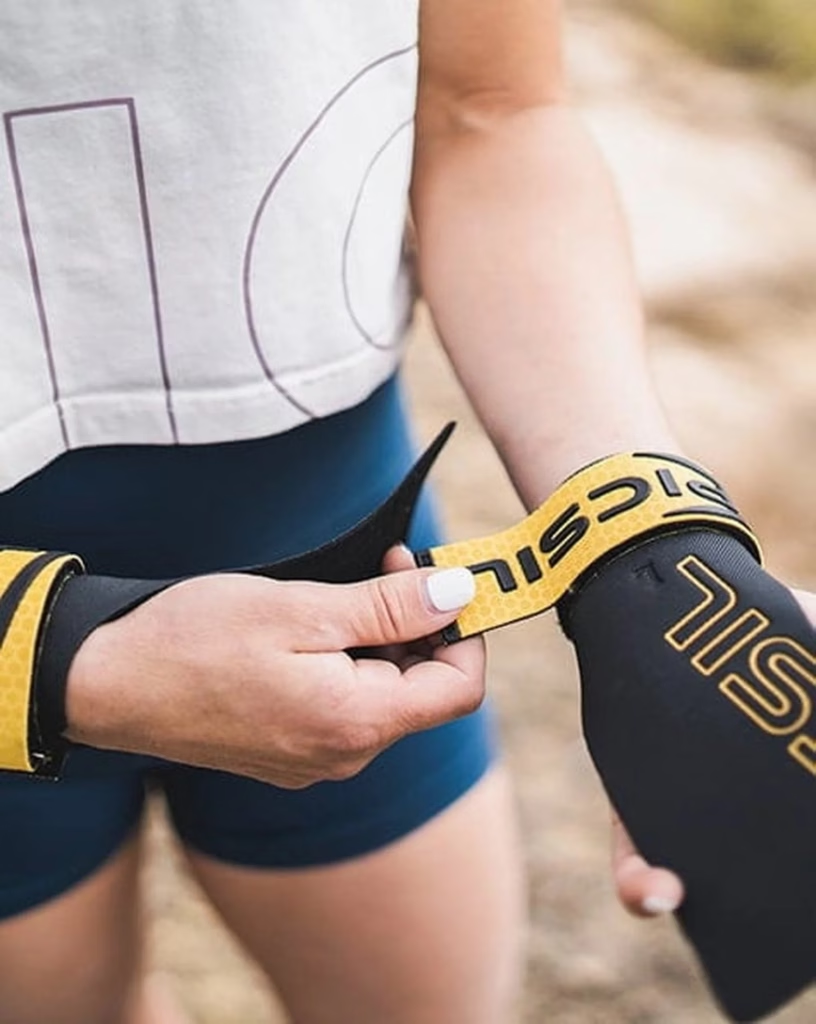Picsil Grips are more than just accessories – they’re essential gear for CrossFit athletes. These grips help protect hands and enhance grip during intense workouts. Whether it’s pull-ups, kettlebell swings, or bar muscle-ups, a pair of Picsil Grips can make a significant difference. In this comprehensive guide, we’ll explore the popularity of these grips, review the Picsil Grips product lineup, and offer tips to maximize your training.
Why Choose Picsil Grips for CrossFit?
Picsil Grips have quickly become a favorite in the CrossFit community for several key reasons:
- Hand Protection: Constant bar work can lead to painful blisters and torn calluses. Picsil Grips create a durable barrier between your palms and the bar, preventing rips and skin damage so you can train harder and longer without bleeding hands. By distributing friction across the grip material, they significantly cut down on hot spots and callus formation.
- Improved Grip & Performance: Slippery hands from sweat or fatigue can ruin a set of pull-ups or snatches. Picsil’s high-quality materials (like patented synthetic fabrics and carbon fiber weaves) offer superior grip on bars and rings, even as you sweat. A secure grip means you can hang on for more reps, lift heavier, and maintain proper form with confidence. Many athletes report that using Picsil Grips instantly boosts their performance by reducing slip and grip fatigue.
- Comfort & Wrist Support: Unlike cheap gym gloves that can bunch up or feel awkward, Picsil Grips are ergonomically designed to fit comfortably. They come with adjustable wrist straps that add support without cutting off circulation. The grips cover your palms where you need protection while still allowing freedom of movement. This balanced design gives you confidence to go all-out in workouts, knowing your grip won’t give out.
- Durability: Picsil is known for using tough, high-quality materials that stand up to the rigors of daily WODs. Their grips are made to last through countless gym sessions. From triple-stitched seams to reinforced fabrics, these grips can handle the constant friction against metal bars. Many models incorporate innovative materials like carbon fiber or patented microfibers for maximum tear-resistance. You won’t be replacing these grips every other month – they’re built for the long haul.
- Versatility: One of the big advantages of Picsil Grips is the variety of models available. Picsil offers an array of grip styles (2-hole, 3-hole, and even fingerless no-hole grips) to suit different preferences and workout needs. Whether you prefer threading your fingers through holes for a locked-in feel or a speedy slip-on, slip-off style, Picsil has you covered. You can choose a model optimized for heavy lifting, high-rep gymnastics, or even one that doesn’t require chalk. This versatility means there’s likely a Picsil Grips model that perfectly matches your training style.
In short, CrossFit athletes love Picsil Grips for protecting their hands and improving grip strength. This instills greater confidence in high-intensity workouts. Next, let’s break down the popular Picsil Grips models and what each has to offer.
Overview of Picsil Grips Models (Reviews & Top Picks)
Picsil produces several models of grips, each featuring unique aspects tailored to different needs. Below we review standout models of Picsil Grips and their best-suited athletes. From all-purpose grips to specialized no-chalk designs, you’re sure to find an option that fits your workouts. (We’ve included convenient Amazon affiliate links for each model to check current pricing and reviews.)
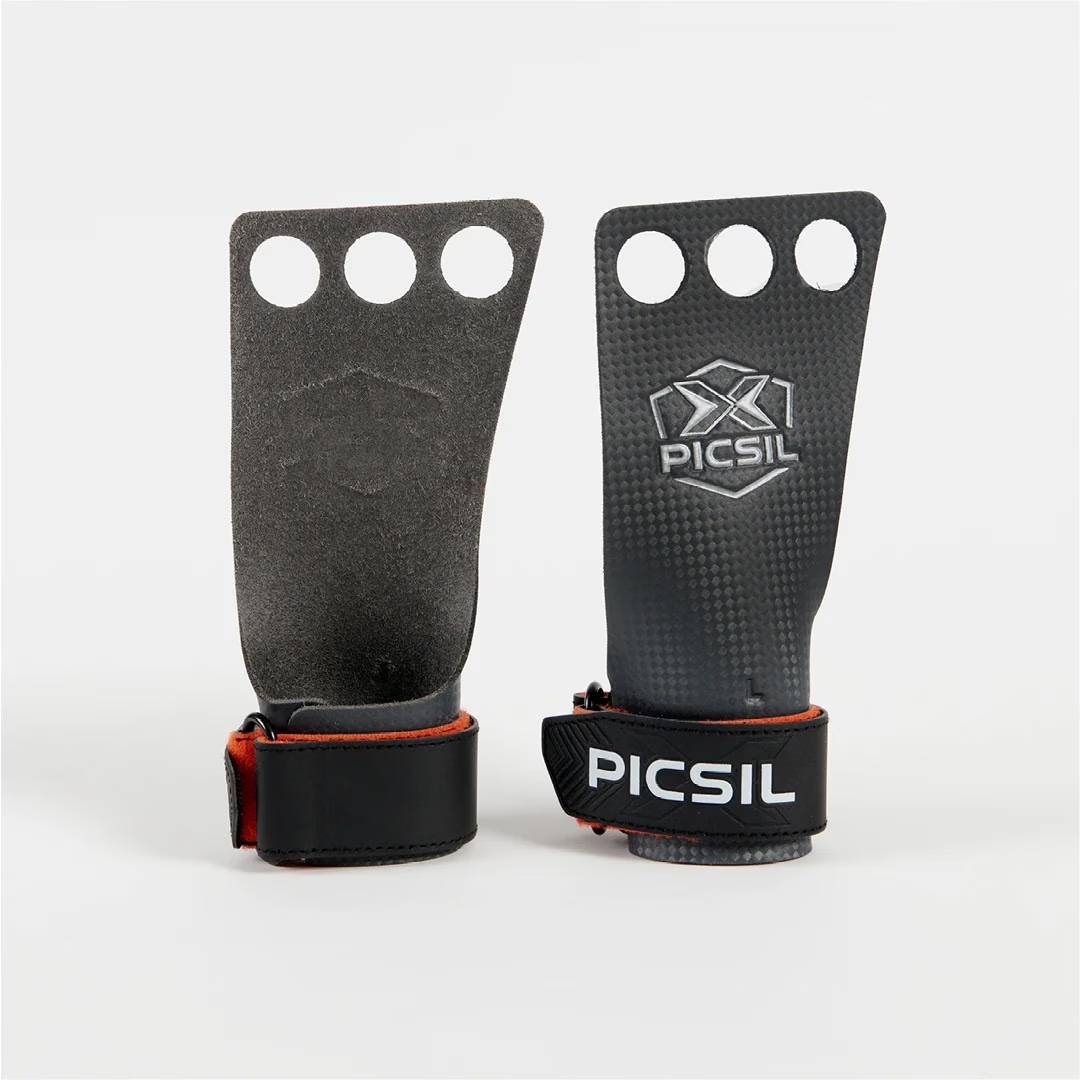
Picsil Azor Grips – All-Around Performance and Value
If you’re looking for an all-purpose CrossFit grip, the Picsil Azor Grips are a top choice. These grips have earned a reputation as Picsil’s flagship model, striking an excellent balance between protection, grip, and comfort. The Azor Grips are made from a patented synthetic fabric about 1.8 mm thick, offering a great mix of durability and flexibility. Athletes love that the material is slightly textured – it grips even better with a bit of chalk, making them ideal for high-rep bar work on slick or powder-coated pull-up bars.
Despite being robust and long-lasting, Azor Grips have a soft interior that’s gentle on the skin. This means you can break them in quickly and they feel comfortable from the start (no stiff leather phase to suffer through). They come in both a 3-hole version (for maximum palm coverage) and a 2-hole version, as well as a no-hole variant. The versatility in designs makes Azor suitable for most hand sizes and preferences. These grips are also known for their excellent value – you get top-tier performance without a sky-high price tag.
Why we like them: Picsil Azor Grips are a fantastic all-around option for CrossFitters. They protect against rips on pull-ups and toes-to-bar, give you a reliable grip on the barbell, and hold up well to daily training. If it’s your first pair of Picsil Grips, the Azor model is a safe bet to start with. (The Azor Grips are available in multiple sizes and colors – check them out on Amazon for current pricing and reviews.)
Picsil Falcon Grips – Maximum Durability for Heavy Training
For athletes prioritizing durability and support, the Picsil Falcon Grips are built to impress. They are among the thickest and toughest in the lineup, approximately 2.0 mm thick, designed to withstand high training volumes. If you log countless pull-ups, bar muscle-ups, and deadlifts, these grips can handle the abuse. Constructed with carbon fiber-reinforced fabric, they provide exceptional strength without a clunky feel. Despite their toughness, Falcon Grips break in to become quite comfortable, aided by a 0.08 mm inner layer that offers a softer touch against your palm.
Key features of the Falcon model include a fingerless no-hole design for versatility and quick transitions, plus an extended wrist strap for extra support during heavy lifts. Because there are no finger holes, you can slide your hand in and out of the Falcon Grips rapidly – perfect for WODs where you need to move between bar work and other movements quickly. The grip surface is slightly textured and works great with chalk, giving you a rock-solid hold on the pull-up bar or barbell. Many competitive athletes keep a pair of Falcons in their gym bag because they trust them for competition day when max effort sets are on the line.
Why we like them: Picsil Falcon Grips are practically bomb-proof. They’re ideal for CrossFitters with a high training volume or those who tend to destroy other grips in a matter of months. The added durability and support come with a minor trade-off in thickness – you might lose a tiny bit of “feel” of the bar compared to thinner grips – but the payoff is excellent hand protection and confidence during heavy workouts. (Ready for long-lasting grips? Check out the Falcon Grips on Amazon to gear up for intense training.)
The Golden Eagle Grips are Picsil’s cutting-edge competition grips, named after one of the most powerful birds. Their unique design is completely fingerless (no holes), aimed at competitive CrossFit athletes wanting maximum speed and grip surface. With a fingerless grip, grab the folded grip in your hand when needed and let it hang free otherwise, allowing for rapid transitions in a WOD. No time is wasted fiddling with finger holes during workouts.
The Golden Eagle Grips are Picsil’s cutting-edge competition grips, named after one of the most powerful birds of prey. What sets the Golden Eagles apart is that they are completely fingerless (no holes) – a unique design choice aimed at competitive CrossFit athletes and gymnasts who want maximum speed and grip surface. With a fingerless grip, you simply grab the folded grip in your hand when you need it and let it hang free when you don’t, allowing for lightning-fast transitions in a WOD. No time is lost fiddling with finger holes in the middle of a workout.
Despite having no finger loops, Golden Eagle Grips offer superb security thanks to their advanced material and shape. They use a special “Micro Diamond” texture on the gripping side, which provides an outstanding stickiness on the bar without requiring a lot of chalk. The thickness is about 1.8 mm, giving a substantial layer of protection (similar to the Azor) while still molding nicely to your palm. Picsil also beefed up the wrist strap on this model – it’s thicker and more cushioned, adding support and comfort during big sets of pull-ups or Olympic lifts.
These grips truly shine in competition scenarios: they’re quick to put on and take off, ultralight on the hands, and deliver a reliable grip even under sweaty, high-pressure conditions. However, because of the high-performance materials and lack of finger holes, the Golden Eagles can be a bit less durable for everyday casual use (the micro-diamond fabric trades a tiny bit of longevity for extra grip). They’re best suited for serious athletes during competitions or peak training cycles where every second counts.
Why we like them: Picsil Golden Eagle Grips are all about speed and grip excellence. If you hate taking your grips on and off during WODs, you’ll love the convenient fingerless style. They give you full palm coverage when needed and zero interference when not. The grip they provide on bars is phenomenal – you can chalk up once and trust your hands will stick. Just remember to use them as intended (for competition and important workouts) to extend their lifespan. (Elevate your competition game – the Golden Eagle Grips are available on Amazon if you’re ready for the upgrade.)
Picsil Hawk Grips – No-Chalk Needed Grip Technology
Do you dislike using chalk or find that it’s not always practical mid-WOD? The Picsil Hawk Grips might be your new best friend. Inspired by the powerful talons of a hawk, these grips were engineered to provide superior grip without the need for chalk. Picsil’s R&D team developed a special material for the Hawk model that maintains a tacky, secure hold on metal bars and rings even if your hands (and the grips themselves) are completely chalk-free. This is a game-changer for anyone training in a gym where chalk is limited, or if you simply want one less thing to worry about during a workout.
The Hawk Grips feature a holeless (fingerless) design, similar to the Golden Eagles, emphasizing quick use and versatility. They are slightly thinner than the Falcon and Azor (around 1.5 mm thick), which allows for great feedback and “feel” on the bar while still protecting your skin. Don’t let the thinner profile fool you – they use a durable synthetic fabric layered for strength, so you’re still getting the renowned Picsil toughness. The magic is in the outer texture: it’s designed to mimic the grip of a chalked hand, offering a confident hold even when chalk or magnesium isn’t available.
Another benefit of the Hawk Grips is that because you’re not relying on chalk, clean-up and maintenance is simpler. You won’t end up with chalk-caked gear over time. In fact, Picsil specifically designed these grips to be washable for easy care (a feature common to many Picsil grips – you can throw them in the wash after a sweaty session so they’re fresh for next time). The wrist strap is sturdy and adjustable, keeping the grip secure without needing finger holes.
Why we like them: Picsil Hawk Grips address a pain point many CrossFitters have – the dependence on chalk. With these grips, you can literally grab-and-go with dry hands and still hang onto the pull-up bar for high rep sets. They’re excellent for travel or outdoor workouts where you might not have chalk handy. Plus, the convenience of not constantly chalking up can potentially save you seconds in a workout. (Curious about chalkless grips? You can find the Hawk Grips on Amazon and experience the freedom of no-chalk training.)
Picsil Phoenix Grips – New Triple-Layer Design for Comfort and Grip
The Phoenix Grips are a newer edition in the Picsil lineup, boasting a triple-layer construction that aims to offer the best of both worlds: comfort and high-performance grip. These grips are named after the mythical phoenix, symbolizing rebirth – and indeed they represent a new generation of Picsil’s technology. The previous version of Phoenix used a double-layer (polyurethane and aramid fiber) for excellent grip and durability. In the new edition, Picsil added a third inner layer that is super soft. This inner layer reduces friction on your palm and helps absorb sweat, making the Phoenix Grips very comfortable even during long workouts. Meanwhile, the outer layers provide the stellar grip and toughness you expect from Picsil.
Phoenix Grips are a no-hole design (fingerless), catering to athletes who prefer a quick on/off and a larger coverage area on the palm. They have an ergonomic shape that slightly tapers to better cover common blister spots while avoiding bunching up. At roughly 1.7 mm thick, they sit between the super-thick Falcon and the thinner Hawk in thickness. Many users describe the feel as very natural and broken-in right out of the package – you get a solid grip with minimal break-in time, and the grips contour nicely to your hands.
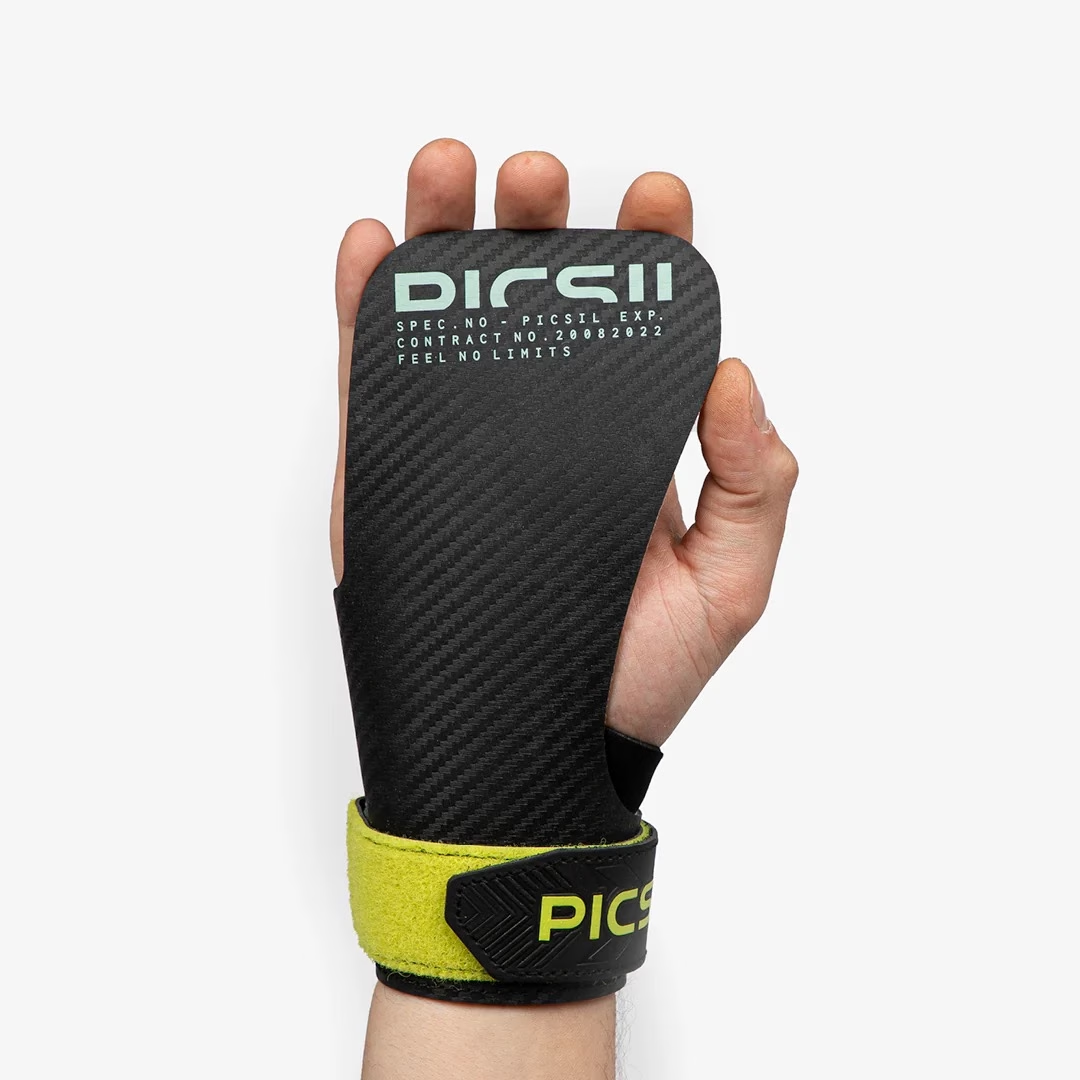
One standout aspect is that the Phoenix’s material composition is optimized to maintain grip even without a ton of chalk. Much like the Hawk, you won’t necessarily need to cake up these grips with chalk for them to work (though a little can enhance them on slick bars). They’re also extremely lightweight, so they won’t slow down gymnastics movements. In terms of durability, the triple-layer design ensures they hold up to daily use; they’re very resistant to tearing thanks to that aramid (a strong fiber) reinforcement in the middle layer.
Why we like them: Picsil Phoenix Grips combine comfort with performance in a big way. They’re great for athletes who want a high-end grip that feels broken-in from day one. If you’ve ever struggled with grips that were too stiff or caused bunching, the Phoenix will be a breath of fresh air. They protect your hands, stay secure even as you sweat, and don’t require much chalk – truly a versatile option for all kinds of WODs. (Give the new Phoenix Grips a look on Amazon to see if they match your training needs.)
How to Use and Care for Your Picsil Grips
Getting the most out of your Picsil Grips isn’t just about buying the right model – you also need to use them correctly and take care of them. Here are some tips on usage, break-in, and maintenance:
- Choosing the Right Size & Holes: Picsil Grips come in various sizes (typically Small through XL). Proper sizing is important – a grip too small won’t cover your calluses, and too large will fold and pinch. Measure your hand as instructed by Picsil (usually from the base of your palm to the base of your middle finger) and choose accordingly. Also decide on finger holes vs no-holes based on your comfort. 2-hole vs 3-hole is mostly about hand width – athletes with broader hands or who want more coverage opt for 3-hole, while others prefer the freedom of 2-hole. No-hole grips are fastest to use but require you to grip them tightly so they don’t slip off – try these only if you’re comfortable with that style (many love it once they adapt).
- Proper Wear Technique: When you first put on hole-style grips, give yourself a few minutes to adjust them. Slide your fingers (usually middle and ring finger) through the holes so that the material lies flat against your palm. The grip should cover the areas that get the most friction (below your fingers where calluses build up). Secure the wrist strap snugly – it should be tight enough that the grip doesn’t move around, but not so tight that it restricts wrist movement or blood flow. For no-hole grips, simply lay the grip on your palm and tighten the wrist strap; you’ll fold the grip over the bar when using it.
- Break-In Period: Most Picsil Grips are made of synthetic materials that don’t require a long break-in, unlike thick leather grips. Still, it’s a good idea to practice a few moderate workouts with your new grips before subjecting them to a competition or max-effort WOD. This allows the material to soften slightly and mold to your hand shape. If the grips have finger holes, those holes may stretch a bit over the first few uses to accommodate your fingers comfortably. Avoid the temptation to cut larger holes (Picsil pre-sizes them well) – use a bit of sandpaper around the edges if absolutely needed, but only after trying them in a couple of workouts.
- Using Chalk (or Not): Picsil Grips generally provide great grip with minimal chalk. In fact, as mentioned, the Hawk and Phoenix models are designed to work without chalk. For other models like Azor or Falcon, you’ll likely still use some chalk for very sweaty sessions or smoother bars – but you’ll need far less than you would with bare hands. A light dusting on the grips or your palms should suffice. One pro tip: apply chalk to the grip itself (front and back) as well as your hands when breaking them in; the chalk can help the material conform and also takes away any initial slickness on new synthetic material.
- Movement Technique: When doing pulling exercises (pull-ups, chest-to-bar, etc.) with grips, try gripping over the bar with the material of the grip between your hand and the bar. Many athletes “extend” the grip by putting their fingers through and then bunching up a bit of the material over the pull-up bar – this creates a dowel effect (like a little roll of material) that you can hook your fingers over. This technique can dramatically increase your hang time because the grip locks in place on the bar. Practice this by wrapping the grip over the bar, then gripping the bar – you’ll feel the material bunch and improve your hold. For barbell movements, ensure the grips lay flat in your palm so you still have a secure feel on the barbell without it rolling.
- Cleaning and Care: One awesome aspect of Picsil Grips is that many models are machine-washable. After a chalk-heavy or sweat-drenched workout, you can toss your grips in the laundry (gentle cycle with mild detergent) and then air dry them. This keeps them hygienic and odor-free. Even if you don’t machine wash often, let your grips air out after workouts – attach them to your gym bag or hang them up so they dry completely (avoiding mildew or stink). For grips with leather components (if any), stick to hand-wiping with a damp cloth instead of full washes to prevent drying out the leather. Always avoid using high heat (no dryers or direct sunlight) as it can warp or weaken materials and Velcro. With proper care, your Picsil Grips will stay in great shape for many months of use.
- Storage: Keep your grips in a cool, dry place. Many athletes keep them in a gym bag pocket or hang them on a carabiner. Just make sure they’ve dried out before stuffing them in a closed bag. Also, periodically check the condition of the grips – if you see any small tears starting or the Velcro strap weakening, it might be time to consider a replacement pair before a failure happens mid-workout.
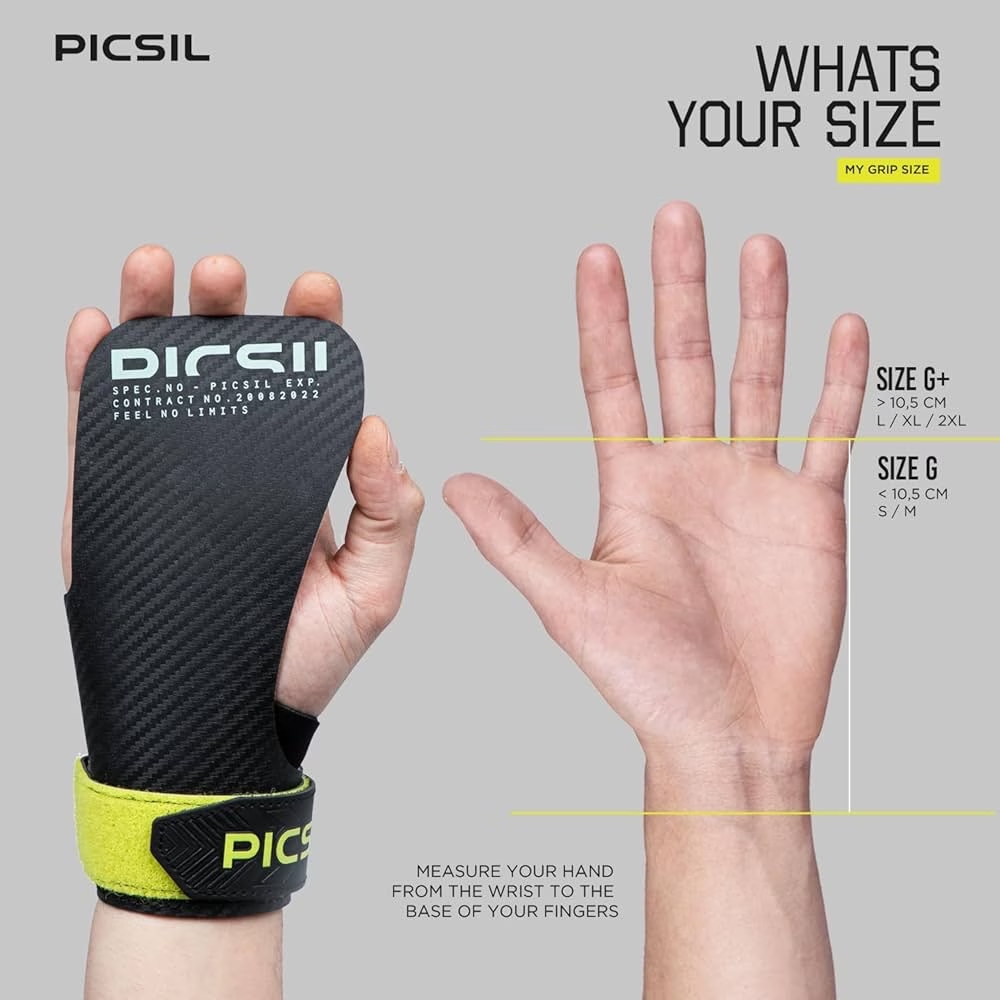
By following these tips, you’ll ensure your Picsil Grips perform at their best and last as long as possible. Now, let’s wrap up with some frequently asked questions about Picsil Grips.
FAQ: Common Questions About Picsil Grips
Q: What are Picsil Grips, and why do I need them?
A: Picsil Grips are protective hand grips designed for CrossFit and functional fitness training. They cover your palms (often with holes for fingers or without) and strap around your wrist. You need them to prevent blisters and tears during exercises like pull-ups, toes-to-bar, and barbell lifts. They also improve grip on bars and rings by providing a tacky, secure surface to hold onto. In short, Picsil Grips keep your hands healthy and enhance performance by reducing slipping and hand fatigue.
Q: Which Picsil Grips model is the best for me?
A: It depends on your training needs and preferences. Picsil offers multiple models:
- Azor Grips: Great all-around grips for most CrossFit athletes. If you want a balance of durability and comfort, Azor is a top pick (ideal for general WODs, high-rep bar work, etc.).
- Falcon Grips: Best for heavy-duty use and long training sessions. They are thicker and extremely durable – choose Falcon if you tend to destroy other grips or do tons of high-volume gymnastics.
- Golden Eagle Grips: Ideal for competitors. They have a fingerless design for quick transitions and an excellent grip texture for maximum hold on the bar. If you compete or do lots of fast-paced WODs, you’ll appreciate these.
- Hawk Grips: Perfect if you dislike using chalk. These are designed to maintain grip without chalk, so they’re great for chalk-free gyms or convenience.
- Phoenix Grips: A new versatile design that’s comfortable and secure. They work for just about anyone, especially if you value a soft feel and sweat-resistant grip.
Ultimately, all Picsil Grips protect your hands – the “best” one is the model that matches your workout style. If unsure, you can’t go wrong with Azor as a starter, and then specialize (e.g., Falcon or Golden Eagle) once you know what you prefer.
Q: How do I choose the right size and hole option (2-hole vs 3-hole vs no-hole)?
A: Sizing is based on your hand size – consult Picsil’s size chart which usually measures from the wrist to the base of your fingers. As a quick guide, if you’re between sizes, it’s often safer to go larger so the grip covers your palm fully. For the holes: 3-hole grips cover more of your hand (three fingers through the grip) and are good if you have broader hands or want maximum coverage against blisters. 2-hole grips (two fingers through) leave one finger free and can feel a bit less restrictive for some; they’re ideal if your hands are smaller or if you prefer a little more flexibility. No-hole grips just sit under your palm and rely on your grip on the bar to stay in place – these allow the fastest on/off but require good technique to use effectively. Beginners usually start with 2-hole or 3-hole to get the security of finger loops, whereas advanced users and competitors might gravitate to no-hole once they’re comfortable.
Q: How long do Picsil Grips last?
A: The lifespan of Picsil Grips will vary based on how often and how intensely you use them, but they are known for their durability. Many CrossFit athletes get at least 6 months to a year of solid use from a pair of Picsil Grips. Some lighter-use individuals can use them even longer. The tougher models like Falcon might last a bit more due to their thicker material, whereas a high-friction, high-sweat daily regimen with something like Golden Eagle (which prioritizes grip over max durability) might wear them out closer to that 6-month mark. Key signs that it’s time to replace your grips include: the material thinning out significantly, any tearing or fraying, or the Velcro wrist strap losing its grip. To maximize lifespan, let them dry after workouts and avoid excessive washing or heat. Overall, you’ll find Picsil Grips last longer than many other brands thanks to their quality construction.
Q: How should I care for and clean my Picsil Grips?
A: Picsil Grips are relatively low-maintenance. After each workout, it’s best to air dry them (hang them on your bag or a hook) to evaporate sweat. For cleaning, most Picsil grips are machine washable on a gentle cycle. You can wash them with mild detergent to remove chalk and sweat build-up. Just be sure to air dry afterward – do not put them in a hot dryer, as high heat can damage the materials and the Velcro. If you prefer not to machine wash frequently, you can also hand wash them in cool water with a bit of soap and then let them dry. Avoid using bleach or harsh chemicals. With regular airing out and occasional washing, your grips will stay clean and odor-free. Also, keep the Velcro free of lint to ensure it continues to hold tight – you can clean out any debris from the hook-and-loop fastener with a small brush as needed.
Q: Do I need to use chalk with Picsil Grips?
A: Not as much as you would with bare hands. Picsil Grips are designed to enhance your grip, so in many cases you’ll find you don’t need much chalk at all. In fact, models like the Hawk Grips and Phoenix Grips are specifically made to provide excellent grip without chalk, which is great for convenience. That said, using a light dusting of chalk can still be beneficial on certain movements or if you sweat a lot. Many athletes will chalk their palms lightly before putting on their grips, or even rub a bit of chalk on the gripping side of the Picsil Grips for maximum stickiness. You can experiment: try doing your set with no chalk and see if your grip holds. If you feel slip, add a bit of chalk next time. Remember, one of the perks of Picsil Grips is that you won’t have to pause as often to rechalk, which helps you keep your momentum during WODs.
With the right pair of Picsil Grips and proper care, you’ll be ready to crush your CrossFit workouts with protected, secure hands. Grip up, chalk (or not!), and get after those PRs – your hands will thank you.
